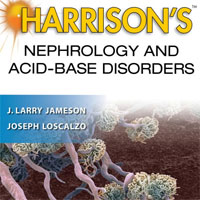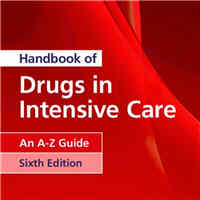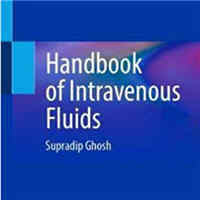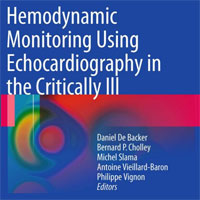Tag: AKI
Sodium Bicarbonate Therapy for Patients with Severe Metabolic Acidaemia in the ICU
In patients with severe metabolic acidaemia, sodium bicarbonate had no effect on the primary composite outcome. However, sodium bicarbonate decreased the primary composite outcome and day 28 mortality in the a-priori defined... read more
Timing of Renal Support and Outcome of Septic Shock and ARDS
Early RRT initiation strategy was not associated with any improvement of 60-day mortality in patients with severe acute kidney injury and septic shock or Acute Respiratory Distress Syndrome (ARDS). Unnecessary and potentially... read more
The Fluid Debate: Balanced or Unbalanced
Consider using balanced fluids in your ED unless you are treating a patient at risk for cerebral edema, or a patient with a chloride responsive metabolic alkalosis, e.g. from gastric losses. Although the superiority of balanced... read more
AKI and Mild Therapeutic Hypothermia in Patients After Cardiopulmonary Resuscitation
The aim of this study was to investigate the influence of mild therapeutic hypothermia (MTH) on the incidence of and recovery from acute kidney injury (AKI). Mild therapeutic hypothermia seems to have a protective effect... read more
In vitro comparison of the adsorption of inflammatory mediators by blood purification devices
Septic shock, a leading cause of acute kidney injury, induces release of pro-/anti-inflammatory mediators, leading to increased mortality and poor renal recovery. This is the first in vitro study directly comparing three... read more
Clinical Decision Support for In-Hospital AKI
AKI carries a significant mortality and morbidity risk. Use of a clinical decision support system (CDSS) might improve outcomes. We conducted a multicenter, sequential period analysis of 528,108 patients without ESRD before... read more
Ten Shortcomings of the Current Definition of AKI
Acute kidney injury (AKI) is defined as an abrupt decline in kidney function. Although the kidney has many functions, this "abrupt decline" mostly refers to the glomerular filtration rate (GFR) that cannot... read more
Advances in Critical Care Management of Patients Undergoing Cardiac Surgery
Cardiac surgery has been evolving to include minimally invasive, hybrid and transcatheter techniques. Increas‑ing patient age and medical complexity means that critical care management needs to adapt and evolve. Recent... read more
Acute kidney injury common in children, young adults in ICU
Among children and young adults admitted to intensive care, as many as 1 in 4 may have acute kidney injury and 1 in 10 may have severe acute kidney injury. Acute kidney injury is common in children and young adults admitted... read more
Biomarkers for Prediction of RRT in AKI
Acute kidney injury (AKI) frequently occurs in critically ill patients and often precipitates use of renal replacement therapy (RRT). However, the ideal circumstances for whether and when to start RRT remain unclear. We performed... read more
Outcomes in Patients with Vasodilatory Shock and RRT Treated with Intravenous Angiotensin II
Acute kidney injury (AKI) requiring renal replacement therapy in severe vasodilatory shock is associated with an unfavorable prognosis. Angiotensin II treatment may help these patients by potentially restoring renal function... read more
Predictors, Prevalence, and Outcomes of Early Crystalloid Responsiveness Among Initially Hypotensive Patients With Sepsis and Septic Shock
Two in three hypotensive sepsis patients were responsive to initial fluid resuscitation. Heart failure, hypothermia, immunocompromise, hyperlactemia, and coagulopathy were associated with the refractory phenotype. Fluid resuscitation... read more
The Effect of 6% Hydroxyethyl Starch (130/0.4) On AKI in Pediatric Cardiac Surgery
We have evaluated the effect of a colloid solution on acute kidney injury in paediatric cardiac surgery. A total of 195 patients were randomly divided into an hydroxyethyl starch group and a control group. In the starch group,... read more
Risk Factors for Ventilator-Associated Events in a PICU
There is an association between ventilator-associated condition and infection-related ventilator-associated complication in critically ill children with acute kidney injury, ventilatory support, and neuromuscular blockade.... read more
Dexmedetomidine Prevents AKI After Adult Cardiac Surgery
Perioperative administration of dexmedetomidine in adult patients undergoing cardiac surgery may reduce the incidence of postoperative AKI. Future trials are needed to determine the dose and timing of dexmedetomidine in improving... read more
Acute Kidney Injury in Sepsis
Acute kidney injury (AKI) and sepsis carry consensus definitions. The simultaneous presence of both identifies septic AKI. Septic AKI is the most common AKI syndrome in ICU and accounts for approximately half of all such... read more
Urinary Oxygenation as a Surrogate Measure of Medullary Oxygenation During Angiotensin II Therapy in Septic AKI
In septic acute kidney injury (AKI), renal medullary and urinary hypoxia developed several hours before increases in currently used biomarkers. Angiotensin II transiently improved renal function without worsening medullary... read more
Harrison’s Nephrology and Acid-Base Disorders
Featuring a superb compilation of chapters related to nephrology and acid-base disorders derived from Harrison's Principles of Internal Medicine, Nineteenth Edition, this concise, full-color clinical companion delivers the... read more

Renal Recovery – RRT Modality
Renal recovery - does the choice of renal replacement therapy matter?... read more
Risk of Venous Thromboembolism in Patients by Albuminuria and Estimated GFR
Albuminuria increases the risk for VTE markedly in patients with normal eGFRs compared with those with lower eGFRs. 15,180 (2.2%) VTE events occurred during the study period. Both albuminuria and eGFR were independently associated... read more
Intra-Abdominal Hypertension and Abdominal Compartment Syndrome
Intra-abdominal hypertension (IAH) and abdominal compartment syndrome are increasingly recognized in both medical and surgical critically ill patients and are predictive of death and the development of acute kidney injury.... read more
The 10 False Beliefs in Adult Critical Care Nephrology
Acute tubular necrosis (ATN), a histological pattern observed after ischemic insult, is considered the most frequent cause of any form of acute kidney injury (AKI) despite the absence of extensive histological data. This... read more









